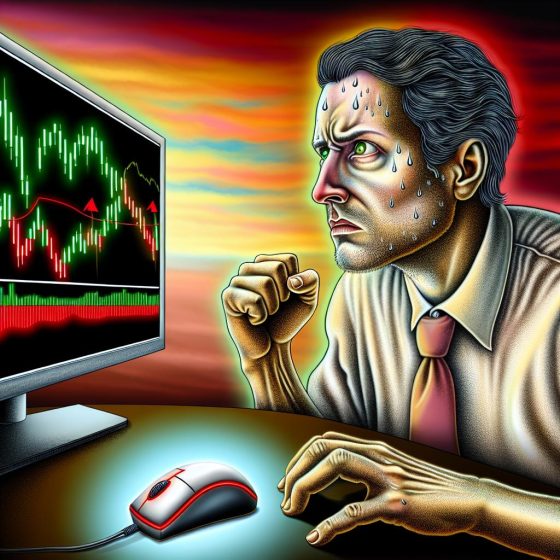Introduction
Developing a trading plan after experiencing multiple failures can be a challenging but rewarding journey. This document outlines the steps I took to create a trading plan that works for me and may offer insights for others facing similar challenges.
Identifying Previous Mistakes
The first step I took was a thorough assessment of my past trading errors. I reviewed all my past trades to identify consistent patterns and errors. This involved going through trade logs, analyzing decisions, and understanding the impact of emotions on my trading approaches. Recognizing these mistakes was crucial in avoiding them in future trades.
Understanding Market Behavior
A solid understanding of market behavior is essential for developing a successful trading plan. I immersed myself in a variety of resources, including financial news sites, market analysis tools, and educational platforms, to enhance my understanding. Continuous learning has been key to adapting to ever-changing market conditions.
Creating a Trading Strategy
After addressing past mistakes and gaining a better understanding of the market, I crafted a specific trading strategy. This strategy was tailored to my risk tolerance, preferred asset classes, and time availability. I made sure to define key elements like entry and exit points, risk management techniques, and the type of analysis (fundamental or technical) to be used.
Risk Management Techniques
Risk management is an integral part of my trading plan. I set rules for determining the acceptable level of risk for each trade, such as percentage of account balance, so that no single loss would significantly impact my portfolio. Techniques such as stop-loss orders and position sizing are now utilized to manage and mitigate risk effectively.
Maintaining a Trading Journal
Keeping a detailed trading journal has been instrumental in refining my plan. I log each trade along with the rationale, outcome, and emotions experienced. Reviewing this journal periodically helps in identifying patterns and emotional triggers that may influence trading decisions.
Conclusion
Developing a trading plan wasn’t a one-time task but a continuous process of learning and adaptation. By identifying past errors, understanding market behavior, crafting a personalized strategy, managing risk effectively, and maintaining a trading journal, I have created a methodical approach to trading. This plan has improved my performance and could serve as a framework for others looking to develop their own strategies. For more detailed information about trading, consider exploring educational resources offered by financial institutions or online courses from reputable platforms.
Detailed Reflection on Past Mistakes
In order to effectively move forward, I took the time to deeply understand the missteps made during initial trading ventures. This process involved more than just acknowledging errors; it required a complete reevaluation of my approach and methodology. Taking advantage of analytic tools helped in scrutinizing each decision, unraveling not just mistakes but the motivation behind them. Emotional decisions, for instance, often led to significant financial setbacks. By pinpointing scenarios that triggered impulsive actions, I could craft a plan that minimized emotional trading.
The Importance of Educating Oneself
Education became a cornerstone in rebuilding my trading approach. Initially, I underestimated the depth and breadth of knowledge required to sustain long-term success in the markets. I committed to continuous learning by enrolling in dedicated trading courses and absorbing information through books authored by seasoned traders. This not only improved my understanding of technical and fundamental analysis but also honed my skills in using advanced trading software and technologies.
Implementing a Sturdy Trading Strategy
With education as my foundation, implementing a strong trading strategy was the next logical step. I focused on crafting a plan that aligned seamlessly with my financial goals and lifestyle. The strategy involved setting realistic targets and defining clear boundaries for trading sessions – regarding time spent, capital at risk, and specific market focus. Meticulous backtesting and scenario analyses were conducted to test the efficacy of the strategy in diverse market conditions. This allowed me to see how it would perform during periods of market volatility and stagnation.
Enhancing Risk Management
Improved risk management was vital for the resilience and profitability of my plan. I established a set risk-reward ratio for each trade to ensure that potential losses would not exceed gains. Additionally, I incorporated diversification into my plan, reducing reliance on a single asset class. Risk management principles were also expanded to include external economic factors, adapting to shifts in global financial climates and geopolitical influences that could impact market dynamics.
Growing with a Trading Journal
The practice of maintaining a trading journal evolved into a critical component of my success. It became more comprehensive, capturing not just quantitative data like price points and volumes but also qualitative insights on market sentiment and personal reflections on each trading session. Over time, this journal provided a wealth of information about my development as a trader, highlighting areas of strength and opportunities for further refinement.
Final Thoughts
The development of a trading plan that aligns with my objectives and mitigates previous challenges has been a transformative experience. It has required dedication, patience, and a willingness to evolve with the ever-shifting landscape of global markets. Aspiring traders embarking on a similar journey may find value in the structured, personalized approach outlined here. By committing to ongoing learning, methodical planning, and diligent self-evaluation, one can navigate the complexities of trading with greater confidence and effectiveness.
For those interested in further expanding their trading acumen, online courses and educational resources provided by reputable financial institutions can be an invaluable starting point. Professional mentorships and interactive workshops may also offer practical insights and real-world trading experiences to enhance understanding and proficiency in market dynamics.









